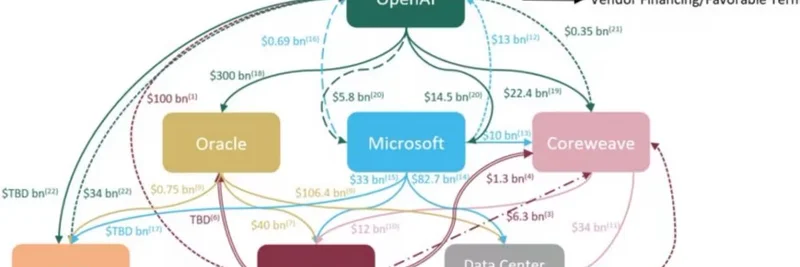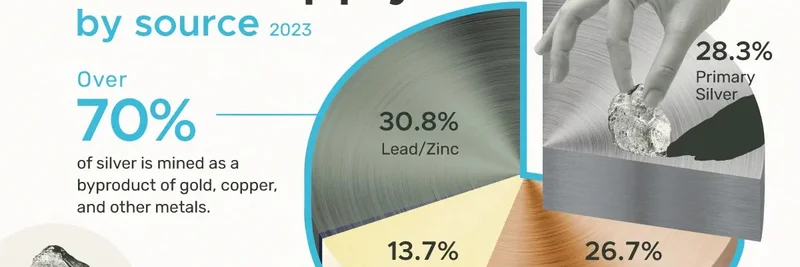In the fast-paced world of tech and crypto, discussions about market bubbles are never far from the surface. A recent thread on X (formerly Twitter) by @S4mmyEth, a decentralized AI researcher with a background in consulting at Ernst & Young, has sparked conversations about the potential popping of the AI bubble. The thread highlights the intricate web of related party arrangements between major players in the AI ecosystem, suggesting that one misstep could send shockwaves through the industry.
The discussion kicks off with a look at Amazon Web Services (AWS), which recently suffered an outage estimated to cost around $75 million per hour in lost profits. While that sounds massive, it's peanuts compared to the $33 billion quarterly revenue AWS pulls in from providing compute power to fuel the global AI surge. S4mmyEth poses a provocative question: How long until we hit peak AI bubble?
Building on that, the main post delves deeper into the vulnerabilities. S4mmyEth argues that the AI bubble is primed to burst due to the cozy interconnections among data centers, AI firms, and chip manufacturers. These companies—think giants like NVIDIA, AMD, Microsoft, Oracle, and startups like CoreWeave—have vested interests in sustaining the hype. They're locked in a cycle of investments, revenue shares, vendor financing, and repurchase agreements that keep the money flowing.
To illustrate, the thread includes a diagram mapping out these capital flows in the AI ecosystem. It shows billions moving between entities: OpenAI receiving hefty investments from Microsoft, which in turn benefits from Oracle's infrastructure, all while NVIDIA and AMD supply the essential chips. Data center leases and favorable terms tie it all together, creating a house of cards where everyone's success depends on the others.
For those new to the term, a "related party arrangement" refers to deals between companies that have close relationships, like shared investors or partnerships. In the AI space, this means tech behemoths are essentially propping each other up, inflating valuations and revenues in a feedback loop. But as S4mmyEth warns, with such entanglement, "it'll just take one domino to topple to see dramatic ripple effects."
This perspective resonates in the crypto community, where bubbles are all too familiar—remember the 2021 NFT craze or the DeFi summer? Replies to the thread echo similar sentiments. One user points out that the capex loop (capital expenditures where chipmakers fund model builders who then buy more chips) can't last forever, but it leaves behind real assets like data centers and talent. Another compares it to stock market disconnects, noting AI's rapid advancements make it hard to call overvaluation.
What This Means for Meme Tokens
At Meme Insider, we're all about connecting these big-picture tech shifts to the wild world of meme tokens. AI-themed memes have exploded in popularity, with tokens inspired by projects like Groq or Bittensor riding the hype wave. If the AI bubble does pop, it could drag down these tokens, as investor sentiment sours on anything AI-related.
On the flip side, a burst might accelerate the shift toward decentralized AI solutions—areas where blockchain shines. Tokens focused on distributed computing, like those on Render Network or Akash Network, could gain traction as alternatives to centralized giants. Decentralized AI aims to break these monopolistic cycles by spreading compute power across networks, potentially making the ecosystem more resilient.
Community Reactions and Broader Implications
The thread has garnered thousands of views and dozens of likes, with replies debating the timeline. Some predict an OpenAI IPO at a trillion-dollar valuation as the peak, while others argue AI's tangible progress (like ever-improving generative models) justifies the valuations. It's a reminder that in tech, bubbles aren't just about speculation—they're tied to real innovation, but overextension can lead to corrections.
For blockchain practitioners, this is a call to diversify. While AI meme tokens offer quick gains, understanding the underlying tech interdependencies can help spot opportunities in resilient projects. Keep an eye on Crypto Twitter for more insights—threads like this often signal shifting narratives.
As we navigate this evolving landscape, one thing's clear: the AI party's still going strong, but the hangover might be brutal if those dominos start falling. What do you think—bubble or sustainable boom? Share your takes in the comments below.



